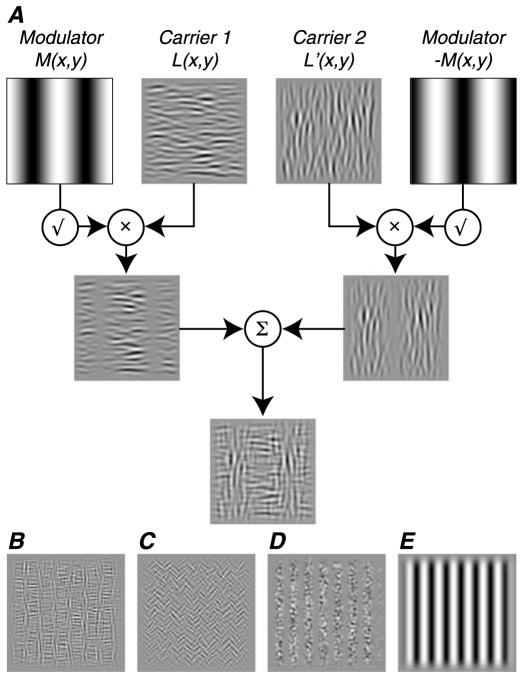Figure 1.
Stimulus composition. (A) Texture-defined form stimuli were created by periodic modulation of two orthogonal noise patterns (carriers 1 and 2). Each carrier pattern was multiplied by a low spatial frequency grating (modulators M and −M). A square root operation was applied to each modulator to ensure that contrast energy did not vary across the final image. The resulting contrast-modulated carrier patterns were combined additively to produce the final image (adapted from Landy & Oruç, 2002). (B) Stimulus composed of vertical and horizontal carriers. (C) Stimulus composed of right- and left-oblique carriers. (D) Contrast-defined form stimulus created by sinusoidal contrast modulation of an isotropic noise carrier pattern. (E) Control luminance-defined stimulus.

